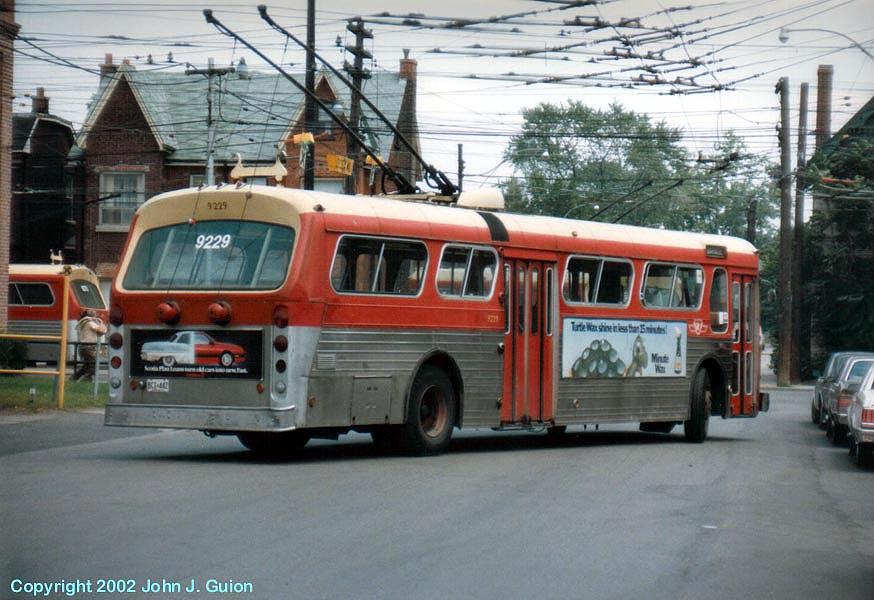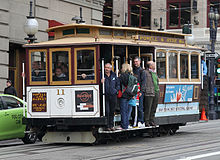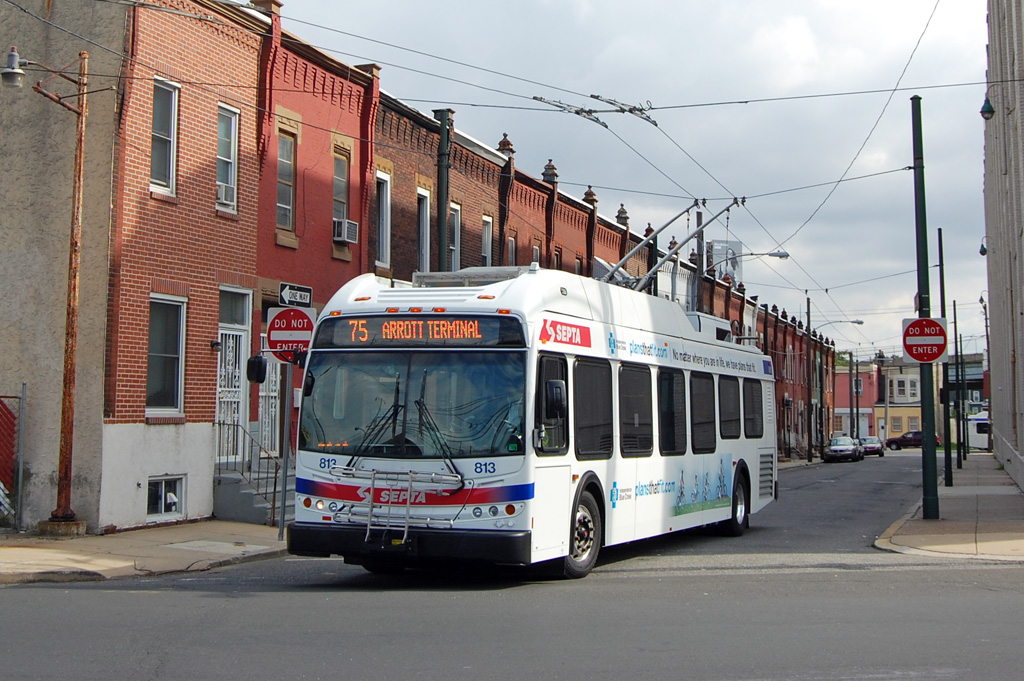London will try to beat traffic and air pollution with this new electric bus
http://grist.org/list/london-will-try-to-beat-traffic-and-air-pollution-with-this-new-electric-bus/

Brits, rejoice! London’s iconic double-decker buses could get a new green makeover.
On Monday, city officials announced that London will begin test-driving an electric double-decker bus in October. Quartz has the details:
The bus will be built by Chinese firm BYD and will run on the number 16 bus route, which goes from northwest London down into Victoria Station. London has had single-decker electric buses on its streets since 2013, but electric double-deckers had previously been thought to be too difficult to build, due to the challenges in efficiently powering something so large, the Mayor’s office said in a release. But BYD’s new battery technology will apparently be light and cheap enough to run in a double-decker bus.
Brilliant! The plan is part of a commitment London city leaders made earlier this week. “At a global clean bus summit at City Hall in London, 24 cities pledged to roll out 40,000 low-emission buses by the end of the decade,” The Guardian reports. The new launch follows London officials’ efforts to reduce inner-city traffic congestion and lower vehicle emissions. Here’s how the mayor describes the current situation:
(Boris) Johnson, who uses the city’s bike-share system to commute to work most days, told the Guardian that he would welcome the quieter, greener buses on his city’s streets, saying current buses are like “throbbing, belching machines that emit their fumes like wounded war-elephants.”
Sounds like the city has held onto its nickname “The Old Smoke” for a reason. Yikes.
GreatGazoo
(3,937 posts)3 cheers and a tiger for London!
TexasProgresive
(12,157 posts)They were common in New Orleans when I was a child. I suppose the were running on the same line as the discontinued street car lines so they could use the existing aerial electric lines but were free of the rails.

nxylas
(6,440 posts)Cambridge, MA has them, and I think Philly does too. But this would remove the need for overhead wires.
marmar
(77,080 posts)
happyslug
(14,779 posts)happyslug
(14,779 posts)The First are what we in Pittsburgh calls Incline, but the proper name is funicular:

https://en.wikipedia.org/wiki/Duquesne_Incline
The Second best transit vehicle when it comes to steep hill are Cable Cars, like the one's on San Francisco.

https://en.wikipedia.org/wiki/Cable_car_(railway)#/media/File:11_Cable_Car_on_Powell_St_crop,_SF,_CA,_jjron_25.03.2012.jpg
https://en.wikipedia.org/wiki/Cable_car_(railway)#List_of_cable_car_systems
Side Note: Watch the list of Inclines in Pittsburgh. Two of the now closed Inclines, Castle Shannon SOUTH Incline and the St Clair inclines were Cable car systems not Funiculars.
After the above two system, electric drive is the best to use on steep hills (San Francisco did replace some of its Cable Cars system with Electric Buses for Diesel buses could NOT take the hills, in the 1950s the plan was to replace ALL of the Cable cars with Trolley Buses, but preservation of the Cable Cars, saved the Cable Cars.
As to using the overhead wires of Streetcars, while in theory possible, in reality no. The main reason is to run an electric system you need a complete circuit, i.e. a line to the streetcar or trolley bus and a line away from the streetcar or trolley bus. In the case of trolley buses that return line was through the rails. This same system is used on electric trains. In Trolley buses, you are running on rubber tires and no rails, thus a dual line system is required. Thus you can use the same poles, the same generator of electricity but the wires themselves has to be 100% changed.
Please note do to their using Rubber tires, Trolley buses are able to go up steeper hills then Streetcars could, through streetcars use less electric power do to the efficiency of steel wheels on Steel rails. Most decisions as to Vehicles relate to cost to operate, that in the case of most mass transit systems 80% of the cost are wages not the type of vehicle or method of power. Electric Buses and Streetcars cost more upfront, but last twice as long as a Diesel bus (i.e. Cheaper long term), but the much lower up front cost of the Diesel bus generally wins out over Streetcars or Electric Trolley buses.
happyslug
(14,779 posts)BYD says it can go 155 miles between charging on a 40 seat bus. 1.6 hours to recharge on a 200 kW system, 5 hours on a 60 kW system.
On most systems, any one bus runs a route, if we assume the route is 10 miles in length and takes 30 minutes one way (one hour two ways, 20 miles), That bus can go for about 7.5 hours. The 155 miles is assuming no hills and few stops, which is NOT the norm. Hills and frequent stops will decrease the mileage. Thus this bus is marginal for most routes, which tend to have frequent routes 6 am to 10 am and again 2 pm to 6 pm (With variations for a lot of workers still work 9 to 5 and thus pre 9 am and post 5 pm are the peak time periods.
Thus you have a gap of four to five hours between these peak periods. Thus a full charge could be ready for the evening in either system.
This bus is to be on London's Number 16 route. The 16 route in London is a 30 stop route over a six mile route. The scheduled route of the the bus seems to vary based on traffic volume.
https://tfl.gov.uk/bus/route/16/
https://en.wikipedia.org/wiki/London_Buses_route_16
Six mile route, 30 stops, the length is not the limiting factor, but the traffic and the number of stops. If you stop on each stop that 60 minutes at two minute a stop. Now, most of the stops will have no passengers to pick up or leave off, thus the trip at times appear to take less then 30 minutes.
You are getting into the limits of battery driven vehicle with this bus. Longer distances, more frequent stops, more passengers, more hills, etc then this is a BAD option. The better choice if such cases would be a Trolley bus or a bus that recharges at each stop (I lean to Streetcars, then Trolley Buses then buses the recharges at stops). .
http://www.bbc.com/future/story/20141028-the-bus-that-recharges-on-the-go
http://phys.org/news/2015-06-fast-electric-bus-overtime.html
The main advantage of Streetcars, is they can be much longer then buses, due to the fact they MUST stay on their track and NOT cut in tighter then the car in front of them (which is the norm when you have trailer or other "cars" behind a tractor trailer or bus). Some bus makers have worked around this problem was installing a computer that keeps the rear wheels in the track of the front wheels, but steel rails still does it better.
Once you get away from Steel Wheel on Steel Rail, the trolley bus comes into its own. Battery operated buses can NOT pull on power other then in their batteries, but Trolley buses can (And why Electric drive is third place, behind a cable pulling up a car, i.e. the Funicular, or attaching the car to a moving cable, as in cable cars). Diesel buses can NOT pull on more power then its engine can produce, but electric buses can pull power from overhead wires to the limit of the electric motors on their wheels and that limit is quite high. Thus diesel and gasoline engines are NOT as good at going up hills as are electric motors.
The electric buses, if they are recharged at each end of their route (Most routes give the bus 10 or more minutes to recover thus some time to recharge, not completely but if the 200 watt recharging unit was used more then enough to keep the buses going back and forth all day long).
On the other hand over head wire eliminates the need for batteries and thus lighter to move and thus uses less electricity. Such systems can be run without any recharging and thus any waiting by people can be kept to a minimum (i.e. if the bus is running late, it can just turn around and recover those ten minutes for it does NOT need to stop and re-charge).
I suspect on buses used in short high volume routes, the battery will be the norm for they could charge well picking up and discharging passengers. On longer routes, with more hills overhead wire will be preferred due to the extra power such wiring can provide.
On low volume route, the diesel bus will be supreme, for it can run infrequently but on a schedule to and from its destinations.
Side note: Cities should consider over head people movers. These could be automated and move a large volume of people from one location to another. In low speed high volume areas that may be the best choice. Here is one from the 1960s:
http://www.dailymotion.com/video/x2q7t1h
https://en.wikipedia.org/wiki/Transit_Expressway_Revenue_Line
Now, the 1967 Skybus project in Pittsburgh failed for it was adopted to replace the last streetcar line in Pittsburgh with a system that provided less service. The Vehicle would have come more often then the Streetcar came, but with less stops for people to get on the vehicle. The last Streetcar line in Pittsburgh was mostly in its own right of way and as such could NOT be replaced with buses, except at the cost of doubling the travel time (In the corridor, it was faster to take the Streetcar to downtown Pittsburgh then driving). Buses just could NOT replace those streetcars, thus Skybus was invented. After ten years of fighting both sides decided it was time to do an actual study of transportation in that corridor and when the study was done, it was clear the opponents of Skybus had been right, the more cost efficient option was to update the Streetcar line.
On the other hand, if the Skybus had been built to replace the buses that ran between Downtown Pittsburgh and the Oakland Section of Pittsburgh (the second and third most popular transit stops in Pennsylvania, Downtown Philadelphia is #1) it would be running today. The problem was Skybus was NOT to replace buses but Streetcars and when the later could be be replaced by Skybus, Skybus died.
I bring Skybus up for as a rubber tired elevated transit system it would be perfect in high density, frequent stops transit lines. If used with Light Rail Vehicles (LRVs, The new names for Streetcars) both would enhanced the other. LRVs could handle distant travel bypassing roads by going under or over them and along existing rail lines, while being feed by something like Skybus that handles high volume and frequent stops with quite rubber tires. In many ways something like Pittsburgh old Skybus would be a better option then an electric bus for being elevated it would avoid traffic congestion and get people along its route to each end of its route.
